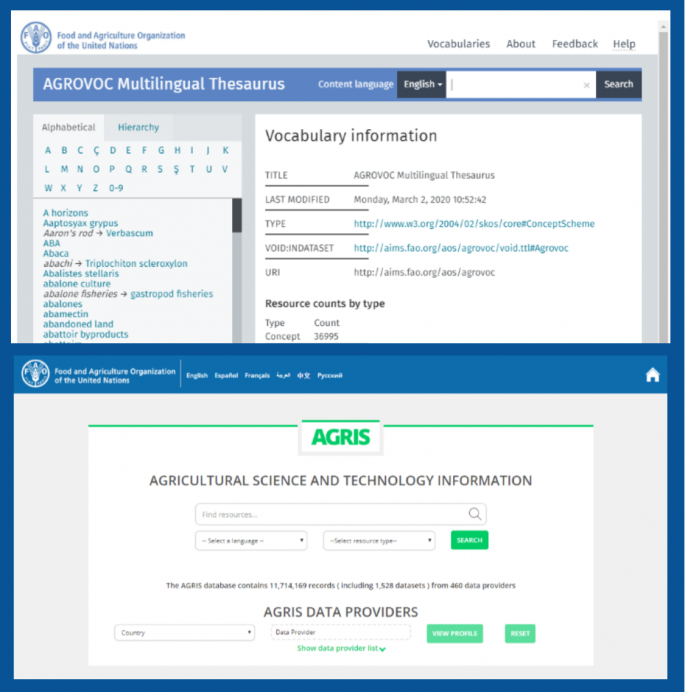Celebrating Open Data Day
06/03/2020

Open Data Day, organized by the Open Knowledge Foundation, is set to take place on Saturday, March 7. Open Data Day is an annual celebration of open data all over the world. For the tenth time, groups from around the world will create local events on the day where they will use open data in their communities. It is an opportunity to show the benefits of open data and encourage the adoption of open data policies in government, business and civil society.
Open Data is data that anyone can access, use or share. In the food and agriculture sector, Open data provides a great opportunity to increase analysis of agricultural performance and, consequently, help inform agriculture investment, innovation and policy to drive changes toward increasing sustainability in the agriculture sector.
As digital literacy has been identified as one of the key challenges in the Data for Development agenda developed by the European Commission, special days, like Open Data Day, that highlight the importance of understanding and utilizing open data, become crucial to raise awareness about the importance of opening up access to data repositories by researchers and private stakeholders. This also highlights the importance of implementing good data management policies within institutions.
Breaking Barriers, Linking and Opening Data
Access to scientific information and data is vital for food and agriculture. Research organizations, higher education institutions, and public policy decision-makers require access to scientific information and data. It is critical to enhance access to, and usage of reliable agricultural information resources as a central building block for improving research and education.
The Scientific Information and Digital Data for Innovation Team within the Food and Agriculture Organization of the United Nations (FAO) works tirelessly on initiatives that bring together, and make available and applicable, large amounts of open data to be accessed and utilized by farmers, researchers, librarians, universities and more.
Through the use of assets like AGRIS and AGROVOC, this work enables more effective use of open data in tackling the food security and nutrition challenges by building the capacity of potential stakeholders to both understand the potential of open data for agriculture and nutrition, and to engage with it practically.
AGRIS:The Link to Worldwide Scientific Agricultural Information and Data
The International System for Agricultural Science and Technology (AGRIS) platform provides free access to more than 12 million records about publications in up to 90 different languages. It facilitates access to referring books, journal articles, monographs, book chapters, datasets and grey literature - including unpublished scientific and technical reports, theses, dissertations and conference papers in the area of food and agriculture.
AGRIS has recently launched the Open Dataset (ODS) initiative, subset of AGRIS that contains metadata of publications from stakeholders who agreed to share data openly. With AGRIS ODS, metadata are now accessible not only through the AGRIS website, but they can also be downloaded and discovered via alternate web services. In addition, AGRIS ODS records are exposed as Linked Data using Resource Description Framework (RDF). Thanks to the adoption of Linked Open Data technologies, any institution can reuse the data, for example, in the data enrichment process.
Linked Open Data allows for the possibility to build services, discover connections between resources and datasets and allows for the cleaning of data, including the ability to identify potential duplicate concepts.
AGROVOC: The Linked Data Concept Hub for Food and Agriculture
AGROVOC is a controlled vocabulary covering all areas of interest of FAO, including food, nutrition, agriculture, fisheries, forestry, environment etc. It is published by FAO and edited by a community of experts.
Controlled vocabularies help capture the richness of variant terms across languages, and promote consistency in preferred terms and the assignment of the same terms to similar content. Controlled terminology also enables interoperability and linking of datasets to each other. Wherever datasets are linked or merged, the connections need to be made at points that are known to be common.
AGROVOC contains more than 36,000 concepts and more than 750,000 terms in 38 languages and is aligned to over other 18 thesauri. It is available as a Semantic Web concept scheme using Simple Knowledge Organization System (SKOS).
Since March 2018 AGROVOC has been available for re-use as a Linked Open Data under the international CC-BY IGO 3.0. License. Due to the vast amount of concepts and terms, it is one of the largest Linked Open Data sets about agriculture available for public use. AGROVOC is a powerful tool to be used for document indexing, natural language processing, machine learning, and text mining.


